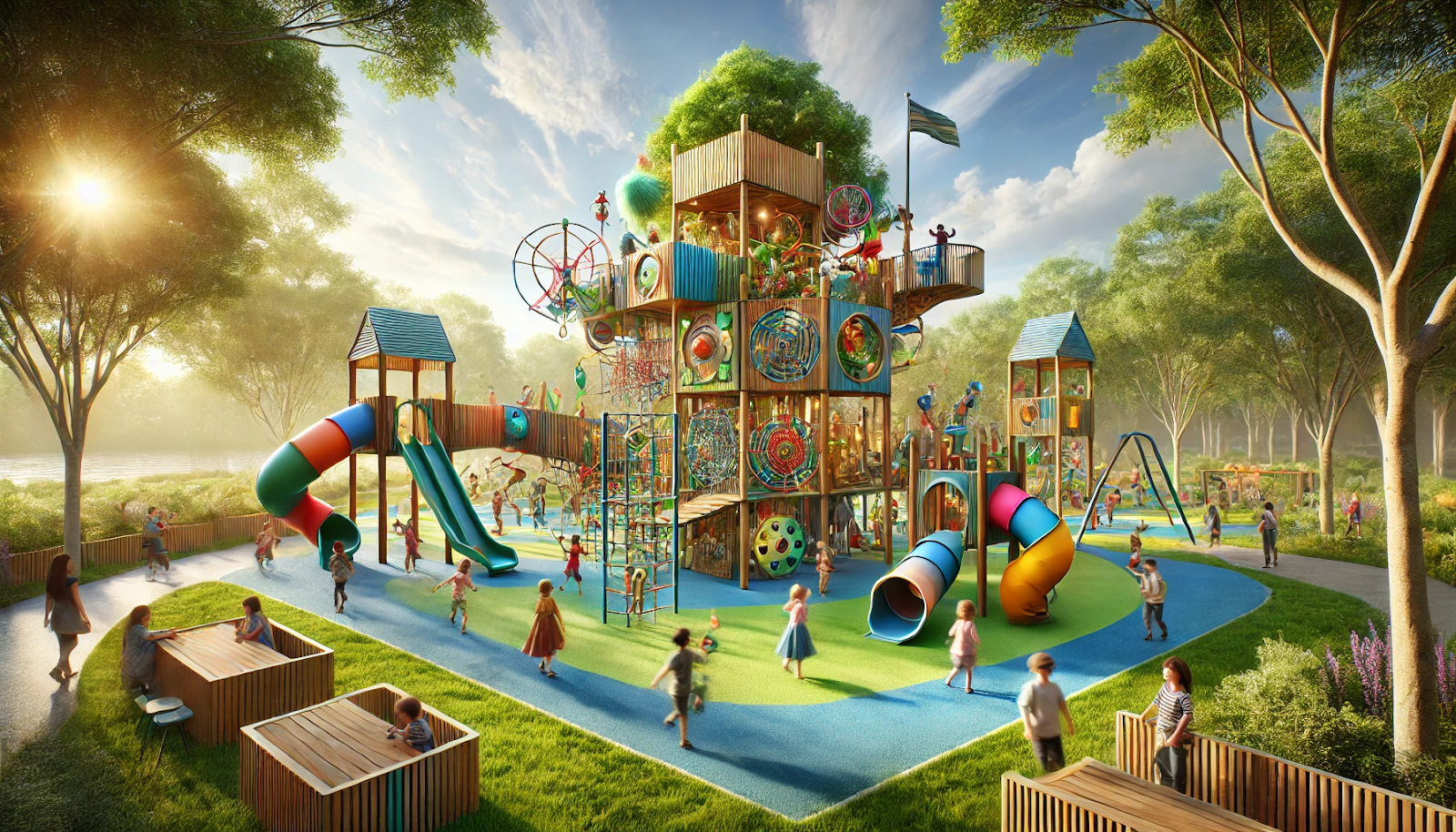How to Choose Playground Equipment That Encourages Creative Play
Playgrounds are more than just spaces for physical activity—they are vital hubs for children’s social, emotional, and cognitive growth. A thoughtfully designed play area with engaging playground equipment can spark creativity and nurture imagination. However, choosing the right equipment is not always straightforward. Parents, school administrators, and community planners are often overwhelmed with options.
This guide will help you understand how to select equipment that fosters creative play, ensuring a well-rounded and fulfilling experience for children.
1. Understand the Importance of Creative Play
Creative play helps children develop critical thinking, problem-solving, and emotional intelligence. It goes beyond swinging or sliding; it allows children to invent games, explore imaginary worlds, and collaborate with others. The right playground equipment can inspire this creativity by offering versatile, open-ended play opportunities rather than rigid, single-purpose structures.
2. Choose Versatile and Modular Designs
Look for equipment that supports multiple types of play. Modular designs like climbing walls, ropes, and interconnected platforms allow children to experiment with various activities. These structures can transform into pirate ships, castles, or anything children imagine. When playground equipment promotes flexibility, it keeps children engaged and encourages endless possibilities for creative exploration.
3. Incorporate Natural Elements
Blending natural features with traditional equipment can stimulate imaginative play. Consider adding wooden structures, sandpits, or interactive water features like a spray park. These elements inspire children to mimic real-life scenarios, such as building sandcastles or pretending to fish. Nature-themed spaces also encourage exploration and interaction, which is essential for fostering creativity.
4. Prioritize Safety Without Limiting Creativity
Safety is a primary concern, but it should not restrict a child’s ability to explore and imagine. Select playground equipment that meets safety standards and includes appropriate cushioning, such as rubberized flooring or sand, to reduce injury risks. Structures with soft edges, sturdy grips, and adequate spacing allow children to play freely while staying safe.
5. Incorporate Interactive Features
Interactive elements such as sound panels, movable parts, or sensory walls are excellent for sparking creativity. These features engage children’s senses and invite them to manipulate, create, and learn. A spray park, for example, is a fantastic way to integrate water-based play, adding a refreshing dimension to the playground and inspiring cooperative play among children.
6. Consider Inclusivity
An inclusive playground ensures every child can participate in creative play regardless of ability. Look for playground equipment designed with accessibility, such as ramps, sensory-friendly areas, and ground-level activities. Inclusive equipment fosters a sense of community and enables children to learn from and collaborate with peers of diverse abilities.
7. Engage Children in the Decision-Making Process
Finally, involve the end-users—children—in planning the playground. Their input can provide valuable insights into what excites their imagination. Incorporating their ideas ensures the space becomes a place they love and use regularly.
Choosing playground equipment that encourages creative play invests in children’s growth and happiness. You can design a play space that inspires endless creativity and exploration by prioritizing versatility, safety, inclusivity, and natural elements. Features like a spray park add further appeal, making the playground a favorite destination for kids. With thoughtful planning, your playground will become a thriving hub of joy, creativity, and learning for all who visit.











Post Comment